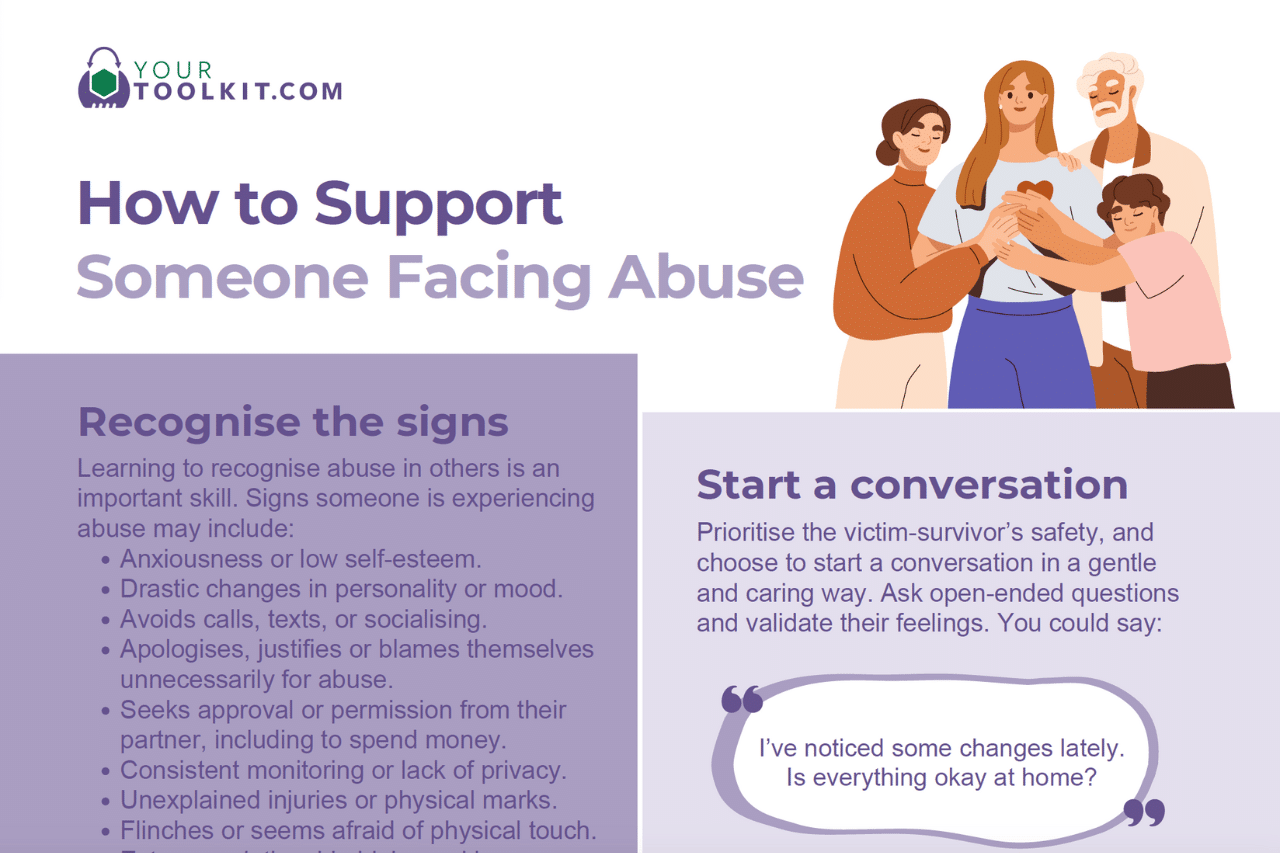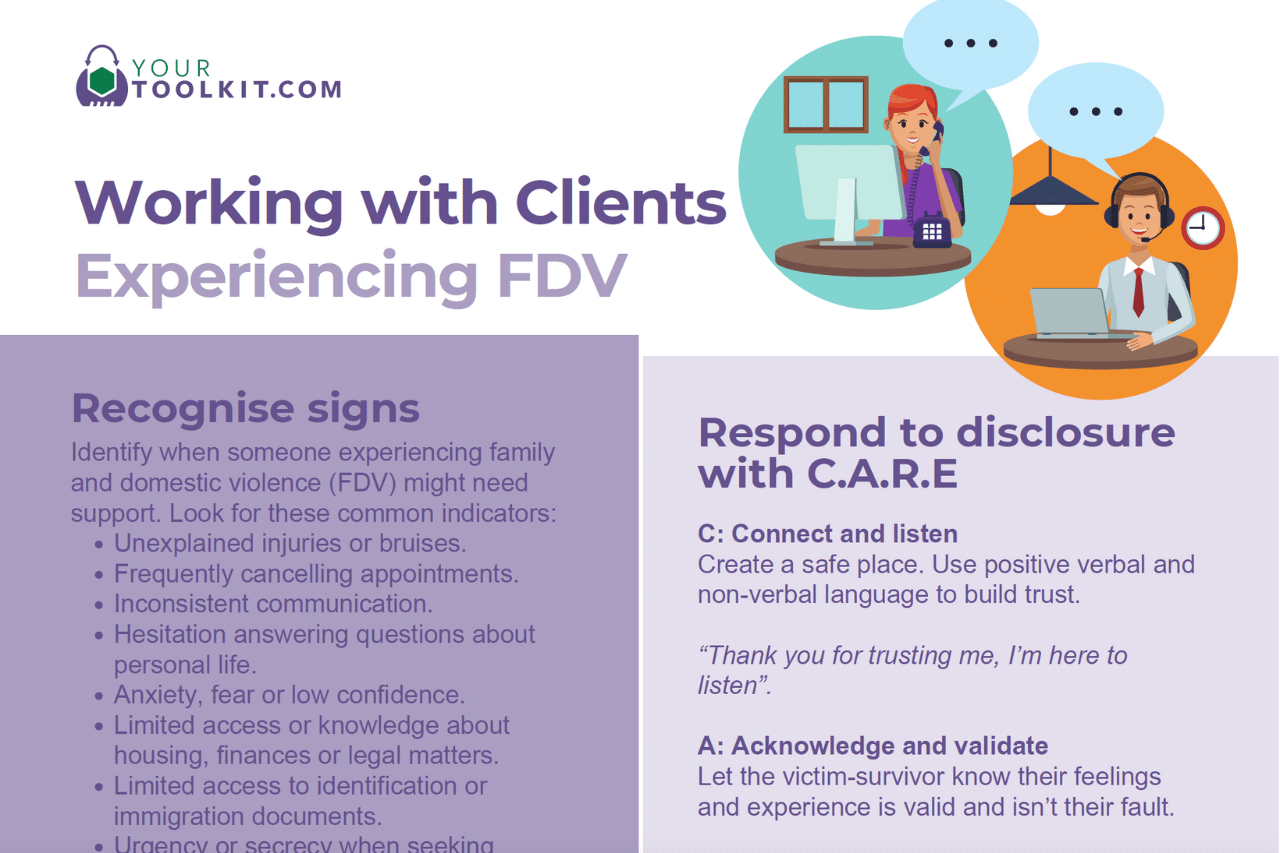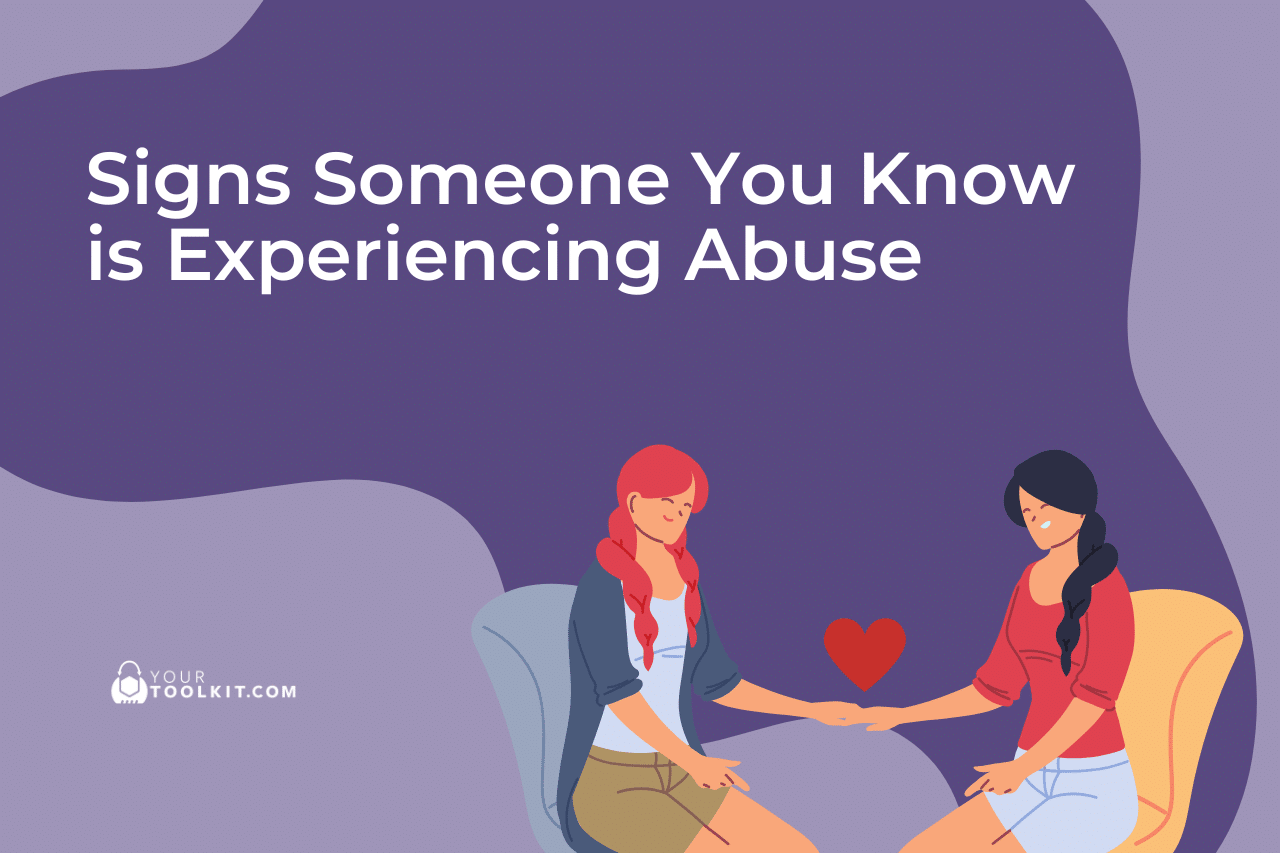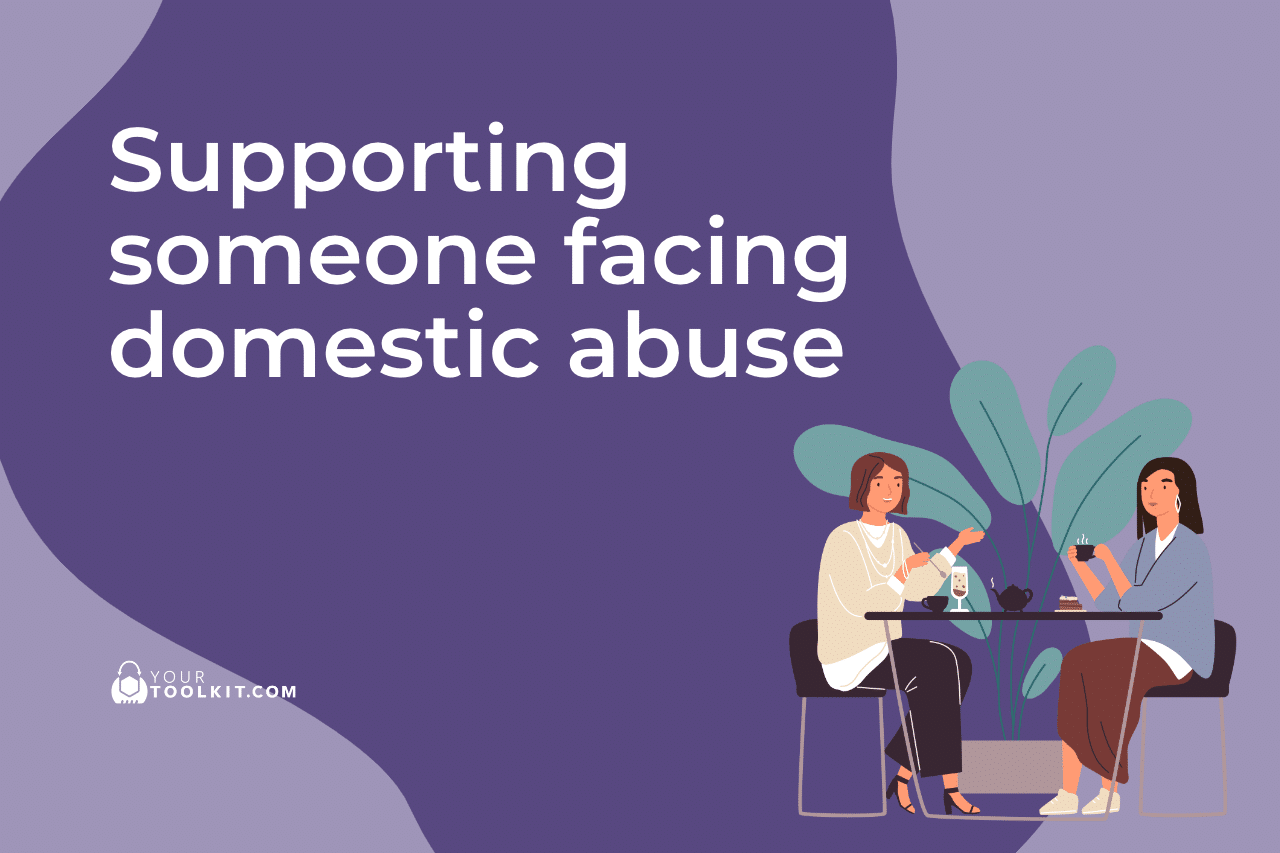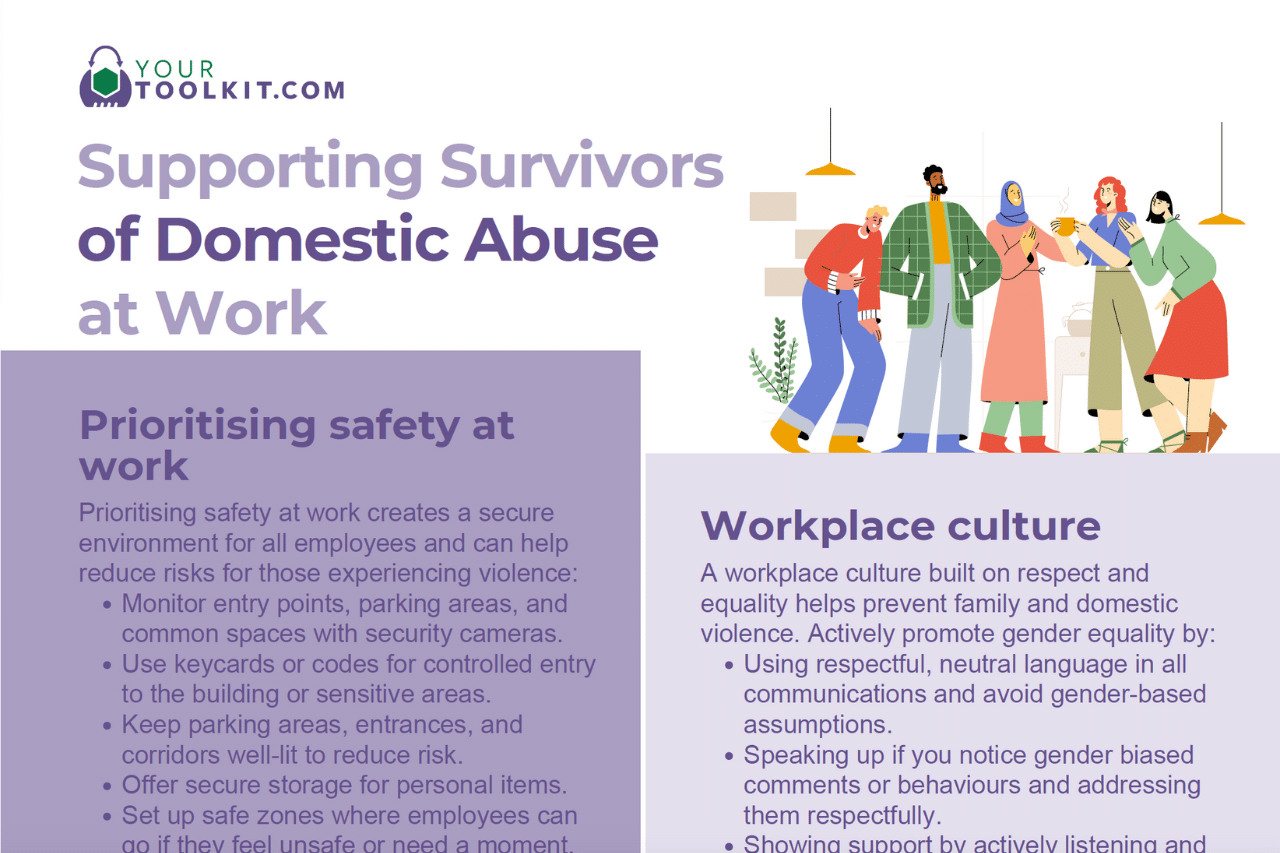Supporting a client experiencing family and domestic violence (FDV) requires both sensitivity and access to the right tools. Yourtoolkit.com offers a comprehensive range of professional resources to help you provide effective support and guidance.

Access professional tools
Fundamentals of Working With Survivors of Abuse:
Safety first approach
When working with victim-survivors of domestic abuse, their physical and emotional safety must be prioritised. Here are some simple steps to follow:
- As a priority, work with the victim-survivor to create a safety plan. If available, complete a personal safety assessment.
- Conduct a security check of the victim-survivors devices, and make sure they’re not being monitored or tracked.
- Ensure confidentiality in all conversations. Let the victim-survivor how their information is stored and protected.
- Avoid any actions that could unintentionally put the victim-survivor at risk, such as leaving voicemails or emails that the abuser could access.
Trauma-informed approach
A trauma-informed approach recognises the impact of trauma on clients and minimises any risks or opportunities for re-traumatisation. To provide the most appropriate support, you could:
- Empower the victim-survivor to make choices rather than decide for them.
- Build trust by being open and honest in your communication.
- Show empathy and acknowledgement for the victim-survivor’s feelings and experiences.
- Research and develop your understanding of the impact of trauma.
- Optimise your work systems so victim-survivors are not required to tell their story more than necessary.
Strength-based communication
Empower the victim-survivor by acknowledging their resilience and capabilities. Shift the focus from what’s been done to them to their strengths in navigating their experiences. To implement this approach:
- Recognise the steps they’ve already taken as proof of their capability.
- Highlight their skills and resourcefulness in managing difficult situations.
- Use positive language that emphasises potential growth and recovery.
- Support them in setting achievable goals that build self-belief.
- For example, swap ‘the children missed a week of school’ to ‘you got your kids to school every day for 9 of 10 weeks of the school term, that’s impressive’.
Understand intersectionality
Intersectionality is how a person’s identity can differ, such as race, gender, culture, ability or others. To provide effective support to a client, we should customise our service to each client’s intersectional profile, such as:
- Recognise each victim-survivor experience is their own, and don’t rush or force ‘pre-structured’ solutions on a client.
- Avoid making assumptions based on the victim-survivor’s identity, encourage curiosity and ask them to share more about themselves with you.
- Expand your understanding of the barriers that victim-survivors might face.
- Provide support from a consultation perspective, be prepared to trust the victim-survivors perspective and adjust your service as applicable.
Incorporating victim-survivor feedback
Incorporating feedback from victim-survivors of FDV is key to improving the services and support systems designed for them. Listening to victim-survivors allows you to make immediate changes and shape long-term policies that better meet their needs. To do this effectively, you could:
- Seek immediate feedback during interactions to adjust your approach in real-time, ensuring the victim-survivor feels heard and supported.
- Use feedback to inform policies and procedures, ensuring that victim-survivor voices are central to decisions about services and practices.
- Regularly review and update systems based on victim-survivor input, creating a continuous improvement cycle.
- Create safe and accessible channels for victim-survivors to provide feedback in ways that suit them and without fear of judgement.
Mandy, a mortgage broker, is helping Sarah who has seperated from her ex-husband due to domestic violence. Sarah is worried that he may still be monitoring her. Mandy offers additional support to Sarah to ensure her safety. She meets with Sarah in public places, and always walks her to and from her car. Mandy uses Yourtoolkit.com to find more information about safety, and digital security to help Sarah. Sarah feels empowered that she gets to make her own decisions and is grateful that Mandy customises her approach to meet Sarah’s needs.
Example scenario
